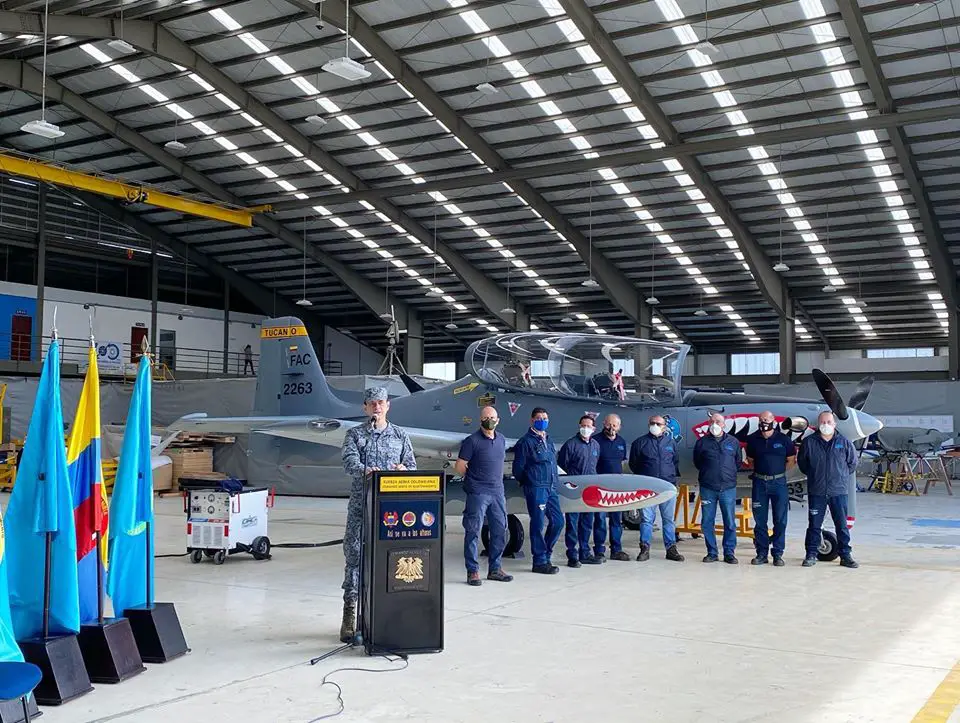The Colombian Aeronautic Industry Corporation (CIAC) delivered the final Colombian Air Force Embraer EMB 312 (AT-27) Tucano aircraft on 30 June, following a six-year upgrade effort across the fleet. The CIAC also performed a complete overhaul to the airframes to deliver the aircraft in a zero-hours condition and extend the type’s lifespan by 15 years. A new avionics suite provided by Collins Aerospace and a ‘glass’ cockpit from Cobham replaced the old analogue cockpit with modern systems and two large multifunction electronic displays. The retrofit programme also involved the installation of new and strengthened wings and landing gear.

Fourteen Embraer EMB 312 Tucanos were ordered in 1992, and delivery of the first six units took place in December of the same year, followed by seven more units arriving later that same month. Assigned to the Colombian Air Force Combat 212 Squadron, the aircraft were initially conceived as trainers, although the type was soon additionally assigned to perform close air support and air superiority missions as part of counter-insurgency operations during the long-standing and brutal fight with the FARC. The type performed dozens of operations including Vuelo de Angel, Thanatos, Fenix and Júpiter. Over 50,000 flight hours have been completed since the type’s introduction without a single loss.

The Embraer EMB 312 Tucano is a low-wing, tandem-seat, single-turboprop, basic trainer with counter-insurgency capability developed in Brazil. The Brazilian Air Force sponsored the EMB-312 project at the end of 1978. Design and development work began in 1979 on a low-cost, relatively simple new basic trainer with innovative features which eventually became the international standard for basic training aircraft. The Tucano made inroads into the military trainer arena and became one of Embraer’s first international marketing successes.A total of 664 units was produced (504 by Embraer and 160 by Short Brothers), flying in 16 air forces over five continents.

The type was designated by the Brazilian Air Force as the T-27 for training purposes and the AT-27 for ground attack in counter-insurgency missions. Inspired by one of the most well-known birds in the Amazon rainforest, a Brazilian Air Force cadet suggested the aircraft be named the “Tucano”, and this was approved on 23 October 1981. Many features of the EMB-312 became standard in later basic-training aircraft designs. It was the first turboprop trainer developed from the beginning with military jet capability. High manoeuvrability, stability at low speeds, and four underwing pylons providing for up to 1,000 kg (2,200 lb) of ordnance, allow the training aircraft to engage in tactical bombing campaigns in low-intensity conflict or counterinsurgency environments and in counternarcotics interceptions.
















